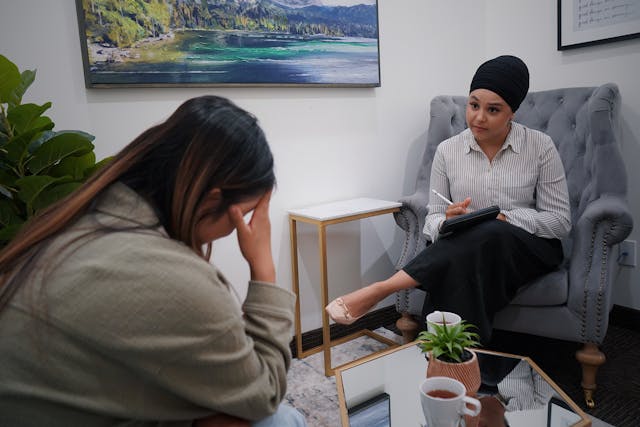Why do patients no-show for appointments?
No-shows are unfortunate situations that impact almost every healthcare practice, so understanding what they are and why they occur is imperative to operating a successful business. Most importantly, no-shows can harm the patient's health, as they prevent them from receiving timely care and can lead to misdiagnosis and delayed treatment.
Further, missed appointments have significant costs for the practice, resulting in empty time slots, overstaffing, and a loss of revenue. In fact, a study has shown that 67,000 no-shows cost the US health care system $7 million (Marbouh et al., 2020); just imagine if there were more.
All in all, it is in the best interest of both patients and practitioners to reduce no-shows. With the right strategies and software, your business will be able to engage with its patients, saving money whilst also ensuring every client receives the quality of healthcare they require.
Why is it important to track your patient's no-show rate?
Although healthcare practices are likely aware of the fact that no-shows are detrimental to their business, they will be unable to deter them unless they track their frequency successfully. The best way to make changes within any environment is by utilizing quantifiable data, which will indicate baseline rates and any noticeable progress.
Additionally, tracking patient no-shows will indicate to practices the specific amount of money that they are losing. If they reduce no-shows by a certain amount, they can allocate the saved money to other more important areas, including hiring more staff or buying necessary resources.
Choosing to track your no-shows will allow you to more successfully implement strategies designed to reduce them, including automated appointment reminders that are sent out to patients before upcoming bookings.
How to track them
If math isn't your thing, don't worry! Following this formula, you can easily track your no-show rates to ensure that you're seeing as many clients as possible.
No-show Rate = No-shows / Weekly scheduled appointments (excluding walk-ins)
Applied with an example, if you see 30 patients per week and you have 7 no-shows, your no-show rate is then 23.3%.

Seven common reasons for an appointment no-show
Before you begin the process of reducing the no-shows at your practice, it is first necessary to understand the reasons why patients miss appointments. Although each patient may have unique circumstances that cause them to miss an appointment, we have compiled a list of the top 7 seven reasons for no-shows. Acknowledging these will allow you to focus on areas of improvement and successfully implement smart software for your healthcare team.
Reason 1: Fear
This is perhaps the most obvious, yet still surprising reason why patients miss their appointments. The truth is, that many individuals still have a fear of seeing a practitioner. This could be fear of impending bad news, being told to change their lifestyle, or they just simply associate doctor's appointments with negative experiences.
Regardless of the reason, practitioners must do everything in their power to ensure that patients feel safe and comfortable. Developing a meaningful relationship will elevate the patient experience and encourage them to look after their health.
Reason 2: Cost
Although the majority of the US population has some form of healthcare insurance, the reality is that up-front payments are still costly. For some people, a healthcare appointment is lower on the list of financial requirements, and they would prefer to just not show up for their booking rather than have to explain their financial situation.
It is a good idea for your healthcare clinic to develop some method of managing these situations so that you can deliver your services to as many patients as possible.
Reason 3: Time
Although the appointment time may have originally suited the patient's schedule, things change quickly and it could have become inconvenient. Patients lead busy lives and they are much more likely to prioritize work and family commitments over a healthcare appointment.
Reason 4: Communication issues
A no-show is categorized as an appointment that a patient misses without getting in touch with the practice. It is often the case that patients attempt to call or contact the clinic when they realize they are no longer able to attend their appointment to no avail. This is especially the case during busy periods of the day, when the phone lines are constantly full.
Reason 5: Forgetfulness
Perhaps the most common and avoidable reason behind a missed appointment is the fact that the patient simply forgot. Forgetting about an appointment schedule is more likely to occur when the gap between making the booking and the actual appointment time is long. Whilst unfortunate, lapses in memory happen to everyone and can be solved with automated reminders.
Reason 6: Accessibility
Accessibility is a major reason for no-shows; another study shows that location was one of the significant contributors to high patient no-show rates for healthcare providers. (Fiorillo et al., 2018).
Some individuals require specific forms of transport in order to get to their appointments, including getting someone to drive them or taking public transport. Unfortunately, neither of these options is 100% reliable, which makes access to certain healthcare clinics difficult. However, for mental healthcare practices and consults, telehealth is a pretty good solution.
Reason 7: Socioeconomic status
It is essential to recognize that disadvantaged populations, including those with low income or age barriers, find it more difficult to attend their appointments. This can be for a variety of reasons, including limited accessibility, lack of money, or language barriers. This can be a make-or-break factor for urban primary care clinic that primarily cater to more disadvantaged demographic populations.
Effective strategies for dealing with patient no-shows
Now you know the reasons why patients don't show up to their appointments, it is important to have a look at different strategies you can employ to reduce this number.
No-show fees
Some practices charge patients a certain amount if they don't turn up to their appointments. While this strategy can reduce no-shows and cover a small portion of the lost revenue, it isn't always that effective. Most of the time, patients aren't made aware of the no-show fee, and if charged, they are much less likely to return to the practice.
Double booking
Double booking patients only works effectively if one of the patients doesn't show up for their appointment. Although this can be an option for patients who repeatedly don't show up, it has the potential to lead to long wait times and frustrated patients.
It would be best to only double book patients who have a track history of missing appointments, are willing to be double booked, and/or only have a minor concern to consult about. That way, even if both patients come in, one will be done quickly, and the other can come in without waiting for hours.
Automated appointment reminders
The most effective option is automated appointment reminders. These generate email or text reminder messages to patients prior to their upcoming bookings. The best systems integrate with your pre-existing software, allowing all of your information to be stored and accessed from the same platform. Your clinic simply needs to formulate a template, and the system will automatically send out the reminders to the relevant patients.
Use multiple communication methods
Reminding patients through one communication channel may not be enough. For example, utilizing email, calls, and texts can significantly increase the chances of clients actually seeing your appointment reminders—especially if they're scheduled at different times.
Some patients may prefer some methods over others (hopefully, you've asked for their preference!), and by incorporating communication through different mediums, you can promote inclusion and increase client engagement.
Pre-paid appointments
Pre-paid appointments are a great way to ensure clients show up, as it acts like a deposit, and provide an incentive for patients to attend their appointments. Clients don't want to lose their money or go through the hassle of retrieving it, and so for this reason, you're much more likely to reduce no-shows. This strategy is the principle behind promo packages and session bundles.
Reduce waits
No one likes waiting, so even during busy periods, you must have efficient business processes in place to reduce waiting. If clients don't feel you value their time, then they certainly aren't going to value yours! Long waits are one of the biggest reasons clinics lose patients, so make sure you don't fall into this category.
If long waiting times can't be helped, consider incorporating interactive distractions within the room, such as magazines or a TV for adults, or some toys for the kids—but be sure to keep it quiet.
Reward loyal patients
If patients are on time, consider providing discounts or offering rewards through loyalty schemes. If clients know they're in to win or are going to save money, they're far more likely to show up on time to your practice.
Follow-up
When a patient doesn't attend their scheduled appointment, consider sending a simple ‘Sorry we missed you!' message or email. As well as contributing to customer engagement, this serves as an effective reminder to patients who simply forgot about their commitments. It prompts clients to reschedule or get in touch about any concerns they have, and it's a good way to let them know that hey, life happens sometimes!
Give thanks
It's very easy to focus on the negatives and spend time chasing up no-shows in hopes to retain customers. However, this perspective tends to dismiss the loyal patients that you do have, and a simple thanks can go a long way! Give appreciation to those who do show up, as well as those who manage to successfully reschedule with you. It's positive reinforcement and can work towards increasing client loyalty and satisfaction.
Strengthen patient relationships
Perhaps the best method for reducing no-shows, building, fostering, and nurturing patient relationships is absolutely essential to ensure they arrive at appointments on time. It shows that you care about your client's health and that they also respect your professional opinion and quality of care. There are numerous ways to do this, including regular newsletters containing updates of your practice, as well as sending birthday and holiday cards.
Final thoughts
Appointment no-shows are an inevitable occurrence in every healthcare practice. Before you begin to combat them, it is initially important to understand why they occur. Although there are unique scenarios, many no-shows are a result of fear, accessibility, lack of money or simply forgetting. Different healthcare practices have introduced strategies aimed at reducing the number of no-shows, and the most effective solution is undoubtedly automated appointment reminders.
If you are interested in implementing reminders into your practice, look no further than Carepatron. Carepatron offers fully integrated HIPAA compliant software that will reduce your no-shows, elevating efficiency and productivity all whilst focusing on achieving good clinical outcomes.
Get started on Carepatron today to automate your appointment reminders and make scheduling easy!

References
Fiorillo, C. E., Hughes, A. L., I-Chen, C., Westgate, P. M., Gal, T. J., Bush, M. L., & Comer, B. T. (2017). Factors associated with patient no-show rates in an academic otolaryngology practice. The Laryngoscope, 128(3), 626–631. https://doi.org/10.1002/lary.26816
Marbouh, D., Khaleel, I., Al Shanqiti, K., Al Tamimi, M., Simsekler, M. C. E., Ellahham, S., Alibazoglu, D., & Alibazoglu, H. (2020). Evaluating the impact of patient no-shows on service quality. Risk Management and Healthcare Policy, 13(13), 509–517. https://doi.org/10.2147/RMHP.S232114








.jpg)




.jpg)

.jpg)
.jpg)

.jpg)



.jpg)
.jpg)
.jpg)
.jpg)

